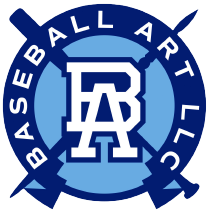Addicted to the Negro Leagues Museum
by Dave Grosby
I’m not sure what it is about the Negro Leagues Baseball Museum that keeps me coming back.

I do Seattle University college basketball games on the radio and for the last 4 years that has meant an annual trip to Kansas City to play fellow Western Athletic Conference member UMKC. Each year, when I’m in Kansas City, I make a trip to the Museum.
I’ve made a few other trips to Kansas City outside of my basketball journeys so all told I’ve been to the Negro Leagues Baseball Museum either six or seven times since it opened in 1990.
I’m a history buff and the museum certainly has that covered. The details in the elaborate timeline can be perused time and again and there always seems to be a historical nugget that I somehow missed on previous passes. The fact that it so accurately portrays the baseball of the times with the backdrop of the history of the times makes it a boon to an amateur historian like myself.
You learn that while there were certainly some great players who were the reason why the leagues survived as long as they did. You are constantly reminded of the sacrifices that took place, and how great some of these teams were.
My favorite team was the Homestead Grays. They featured 12 players who would eventually be inducted into the Baseball

Hall of Fame. With stars like Cool Papa Bell, Josh Gibson and Buck Leonard the Grays rolled to nine consecutive Negro National League championships. I would have loved to see the Grays take on the best the major leagues had to offer (and my money would have been on them).
I am captivated like many by the Field of Legends (a display at the end of the tour that features a mock field with statues) and the Heroes of the Game lockers (which honor the very best players) but the Negro Leagues Baseball Museum is not a Hall of Fame like Cooperstown.
The barber shop and room mock-ups give you a sense of what life was like for the average Negro Leagues player. The historical timeline which is challenged to keep up with the changing leagues and history that made up Negro Leagues baseball always helps you keep in historic perspective the backdrop of events that were going on in the world at the time. That part of the museum (and life in the Negro Leagues) is presented in unsparing detail.
My most memorable trip was January 23rd, 2015. I was looking at the vast autographed baseball section donated by musician Geddy Lee of Rush fame when I noticed a television camera in the museum.

It was a Friday afternoon around noon. (I know this because my routine in visiting is always the same. The NLBM is followed by a quick stop in the connecting Jazz Museum. Then I’m off to Arthur Bryant’s on Brooklyn Street just around the corner for barbecue.)
Because it was a Friday afternoon in January the museum was deserted except for me. The camera came closer and the interviewer was here because of the death that morning of Ernie Banks. The man known as “Mr. Cub” had started his career as a Kansas City Monarch. His death, and learning of it at the museum, was a reminder to me of how few are left to tell the history.
I will be back in Kansas City on Thursday, February 8th, 2018 and I am already anticipating my trip (around noon) to a museum that never gets old based on a league that’s frozen in time.
 Dave Grosby (aka “The Groz”) is Seattle’s longest running sports talk host. He began his Seattle career in 1991 at KJR. He currently works at ESPN Seattle. You can follow Dave on Twitter @Thegroz
Dave Grosby (aka “The Groz”) is Seattle’s longest running sports talk host. He began his Seattle career in 1991 at KJR. He currently works at ESPN Seattle. You can follow Dave on Twitter @Thegroz
